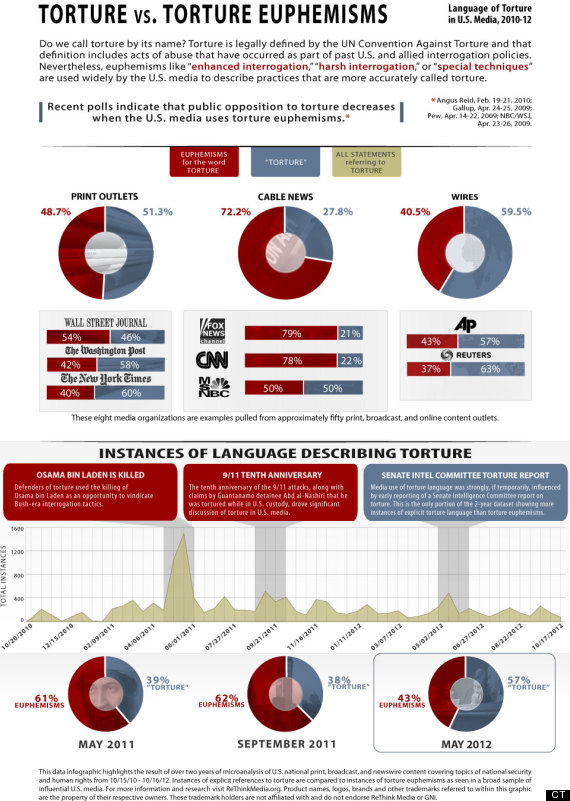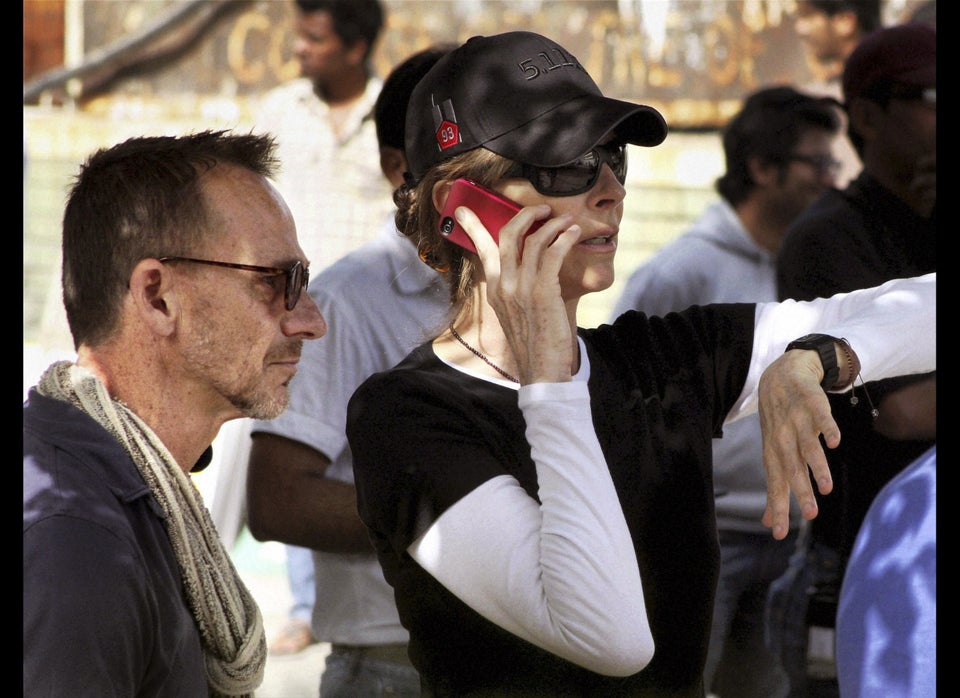A new study has taken a close look at how American media refers to torture.
The study, by ReThink Media, looked at the coverage of 50 media outlets between October 2010 and October 2012, and examined whether or not they used the word "torture" when referring to American interrogation practices, or whether they used phrases like "harsh interrogation techniques" instead.
The reluctance of many media organizations to use "torture" has long been a sticking point with many media critics.
Previous studies showed that, once the Bush administration started waterboarding people, major media outlets stopped referring to the method as torture. Things have apparently improved since then.
Generally, the "Covering Torture" study found that print media is better than television at not using euphemisms. While the New York Times used "torture" 60 percent of the time, Fox News used it just 21 percent of the time, and CNN used it 22 percent of the time. (MSNBC, the study said, was evenly split in its approach.) Overall, cable news leaned very heavily towards euphemisms, using them nearly 73 percent of the time, while print outlets used them 48 percent of the time.
The study found that there was only one period of time between 2010 and 2012 when the 50 outlets used the term "torture" more than some other phrase. That occurred during a flurry of reporting about a Senate Intelligence Committee probe into torture.
A look at one Thursday article in the Times shows the contortions that sometimes go into writing about torture. (The paper has long had a tangled approach to the subject.) The front page piece by Scott Shane focuses on the debate about "Zero Dark Thirty," the new film about the hunt for Osama bin Laden. The film has attracted controversy for showing scenes of torture and, in the eyes of its critics, implying that it helped lead to bin Laden's capture -- something top senators told HuffPost was flatly not true.
Shane's piece carries the blunt headline, "Portrayal of CIA Torture in Bin Laden Film Reopens a Debate." The article, however, never contains that stark phrase, but instead moves all over the place. It says at one point, "the film opens with torture," and mentions "torture sessions" but then refers to the CIA's "brutal interrogation" methods. It also refers to "brutal treatment" and an "extended interrogation scene."
Contrast that with a January article on torture in Libya, which only uses "torture" to describe what was happening to people in that country.
Even so, the Times did better in the study than other print outlets, like the Washington Post or the Wall Street Journal.
Below, see the results of the study:
